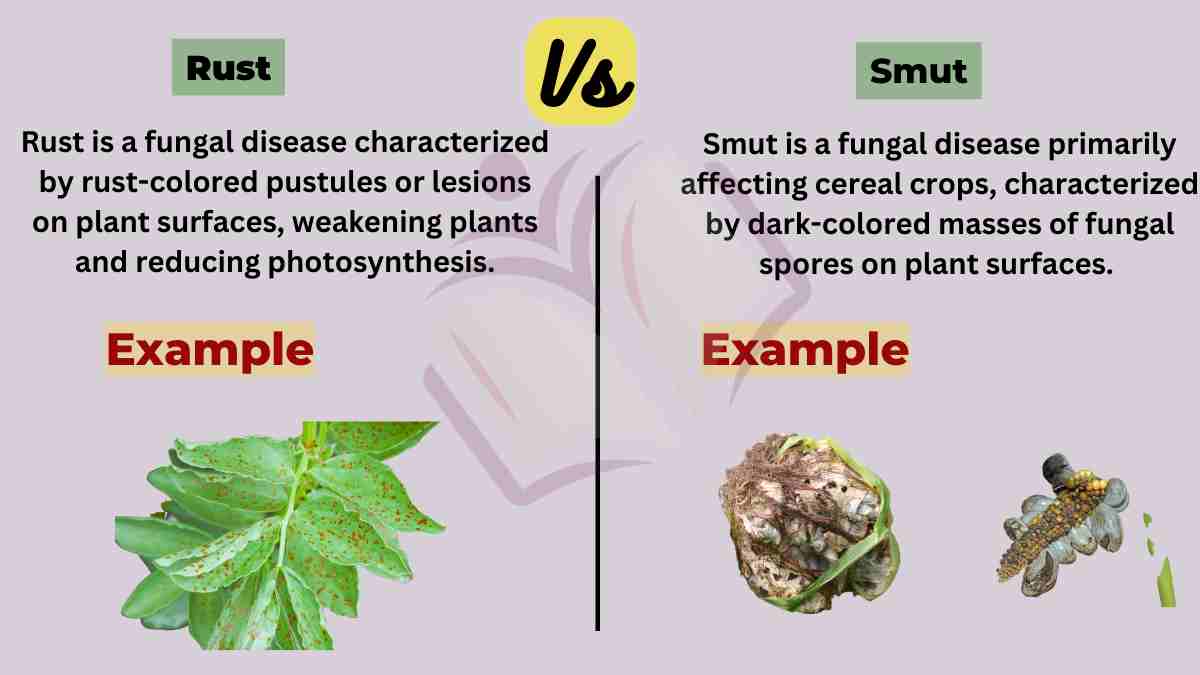The key difference between rust and smut is that rust is a fungal disease affecting plants, characterized by reddish-brown discoloration, while smut is a fungal infection causing black, sooty spore masses on plant tissues.

What is Rust?
Rust is a fungal disease characterized by rust-colored pustules or lesions on plant surfaces, weakening plants and reducing photosynthesis. Rust refers to a type of plant disease caused by fungal pathogens belonging to the Pucciniales order. These pathogens often appear as reddish-brown or yellowish-orange powdery spore masses on the surface of infected plant parts, such as leaves, stems, and fruits.
Rust diseases can significantly impact crop yield and plant health, leading to reduced photosynthesis and nutrient absorption. Control measures include crop rotation, resistant cultivars, and fungicides, but preventive practices remain crucial for managing rust outbreaks effectively.
What is Smut?
Smut is a fungal disease primarily affecting cereal crops, characterized by dark-colored masses of fungal spores on plant surfaces. It causes yield reduction, distorts plant growth, and affects grain quality. Smut refers to a type of plant disease caused by parasitic fungi belonging to the Ustilaginomycetes class.
These fungi primarily attack cereal crops like corn, wheat, and barley, forming black, powdery masses of spores on the infected plant parts. Smut spores are typically dispersed through wind or contact, leading to the spread of the disease in agricultural fields. To control smut, farmers often use resistant crop varieties and employ proper sanitation and crop rotation practices to minimize their impact on crop yield and quality.
Rust vs Smut
The primary difference between rust and smut is given below:
| Characteristic | Rust | Smut |
| Disease Type | Fungal disease. | Fungal disease |
| Causative Agents | Various genera of rust fungi. | Various genera of smut fungi |
| Affected Plants | A wide range of plants, including crops, trees, and ornamental plants. | A wide range of plants, including crops, trees, and ornamental plants. |
| Symptoms | Rust-colored powdery spots or pustules on the plant surface. | Black, sooty masses of spores replace affected plant tissues. |
| Transmission | Through airborne spores and direct contact with infected plants. | Through infected seeds or soil, as well as airborne spores. |
| Lifecycle | Complex, involving both sexual and asexual stages. | Complex, involving both sexual and asexual stages. |
| Economic Impact | Can cause significant damage to agricultural crops, reducing yields and affecting product quality. | This can lead to yield losses in crops, affecting grain quality and market value. |
| Control Measures | This can lead to yield losses in crops, affecting grain quality and market value | Use of resistant plant varieties Seed treatment to prevent Smut Infected seeds from the plant |
